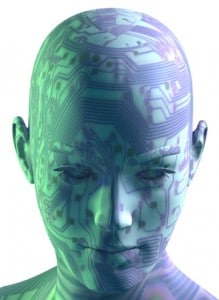Automation by computers is unlikely to replace much of the work currently done by lawyers any time soon and the negative employment effects of technology have been overstated, according to a study.
Suggesting the current literature – including the recent book by Professor Richard Susskind and Daniel Susskind – exaggerates the likely impacts of automation, the authors argued that “predictions of imminent and widespread displacement of lawyers are premature”.
In Can Robots Be Lawyers? Computers, lawyers, and the practice of law, Dana Remus, professor of law at the University of North Carolina School of Law, and Frank Levy, professor emeritus in the department of urban studies and planning at Massachusetts Institute of Technology, said they were addressing “weaknesses in the existing literature” relating to the limits of emerging software; an absence of data on how lawyers divide their time between tasks; and a failure take seriously “the values, ideals, and challenges of legal professionalism”.
The authors said the Susskinds and others gave examples of computers performing lawyers’ jobs but did “not prove the imminent and widespread displacement of lawyers by computers”. Instead, much writing “jumps to this conclusion”, they argued.
They challenged the notion that the public interest was “best served by commoditising and computerising as many legal services as possible” or that “computerisation will… inevitably lower costs in all areas”.
Ultimately, the authors concluded, computers, unlike legal professionals, were unable to provide “counselling, a robust understanding of law, an appreciation of client interests, the provision of reasons, and interaction with the legal system… [which] are core professional values. They are also central to the rule of law, illustrating a fundamental and necessary connection between the two”.
The study was in three parts. Firstly, it addressed the current capabilities of machine intelligence and its potential for “current or near-term automation” of major parts of lawyers’ work. It examined several categories of work that were more or less susceptible to automation, including document drafting, preparation and review, legal research, reasoning and negotiation.
The authors acknowledged the “moderate… penetration” of computers into the area under the broad heading of document drafting, but questioned that it should lead to “sweeping conclusions about massive lawyer displacement”. A slower-than-projected growth in market share of the US document template specialist LegalZoom was cited as evidence for caution.
Many lawyers’ tasks involving unstructured data were beyond the capabilities of current computing, they concluded. Where technology was strongest it would affect clerical staff and paralegals but less so lawyers, and “computer technology is the least advanced in the areas of legal writing, advising clients, communications and interactions, factual investigation, negotiations, and court appearances”.
Secondly, using data from consulting firm Huron Legal’s ‘legal spend analytics and benchmarking tool’, Sky Analytics – which provides corporate clients with aggregation and analysis of invoices billed by law firms – the academics questioned “conventional wisdom” which assumes the employment effects of computers on lawyers are significant and that they are greatest among junior associates.
They claimed the results showed “that there is no strong relationship between computers’ employment effects and position within a firm, and that even where automation has made significant progress, its impact has been less than the headlines would have us believe”.
Lastly, the authors claimed the only way to understand the consequences of changes wrought on lawyers’ work and the law itself by computers was to examine the ways in which computers tackled “various lawyering tasks differently than humans”.
Sometimes the differences were positive, for example in eliminating human error, and sometimes they were detrimental, for example in creating new errors “or threaten[ing] creativity and flexibility in the law”. They went on: “Reducing a lawyering task to a set of computer-implementable rules may over-simplify, ignore complexity, or create opportunities for error that are not immediately apparent.”
Equally, a reliance on legal prediction software to inform decisions on, for instance, whether to proceed with litigation, could “impede the law’s development”. It would create a system based entirely on outcomes and not reasons “asserted by lawyers and memorialised in judicial opinions, which provide a continual opportunity through which to debate and potentially change the law”.

















Leave a Comment